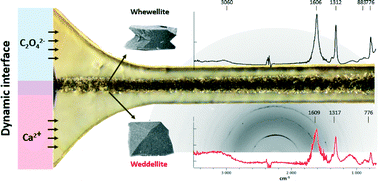Calcium oxalate precipitation by diffusion using laminar microfluidics: toward a biomimetic model of pathological microcalcifications†
Abstract
The effect of mixing calcium and oxalate precursors by diffusion at miscible liquid interfaces on calcium oxalate crystalline phases, and in physiological conditions (concentrations and flow rates), is studied using a microfluidic channel. This channel has similar dimensions as the collection duct in human kidneys and serves as a biomimetic model in order to understand the formation of pathological microcalcifications.


 Please wait while we load your content...
Please wait while we load your content...